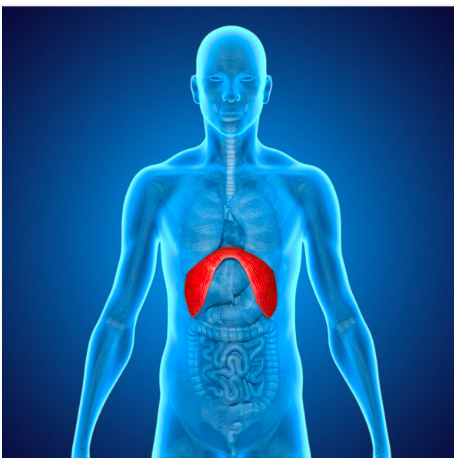Delta Strong Lifting (DSL)
Delta Strong Lifting
Description
Delta Strong is a breathing training routine performed with a respiratory training device. Physiotherapist Peggy Nicholson introduced the first version of this device in1980, to treat patients with asthma and emphysema.
It works with the basic principle of resistance training. It’s like lifting weights with the diaphragm. Its valve system provides a calibrated load to breathe against. when you breathe in through the mouthpiece air is only released if you use enough effort to force the breathing muscles which includes the diaphragm and the chest expansion muscles. These muscles work harder as they move up and down; the more resistance, the harder the lungs are working.
There are several types of respiratory training devices available in the market. If you dont have a breathing device, you can replace this exercise with Kapalabhati, since both have the same training objetive.
Training Objective
1. Strengthen the breathing muscles; chest expanding muscles; specially the diaphragm.
2. Great warm-up exercise before any sport or physical activity (Walk, Run, Swim, Bike, Row, Dive. Etc.).
Execution
This exercise could be very challenging when the heavy load option is selected. Also if you are new to respiratory muscle training, you will experience a lightheaded feeling during the first few weeks of training. The body needs time to adapt to the increased exchange of oxygen and carbon dioxide.
- Insert the mouthpiece in your mouth. Bite down the inner sides of the mouthpiece to hold it in place.
- Breathe in and out while adjusting the resistance valve to select your desired level of breathing resistance; make it challenging, always maintain positive sensations. Turn the valve to the left for more resistance , and turn it to the right for less . Once you have set your desired level of resistance, do the following three-step exercise without taking the mouthpiece out of your mouth.
- Inhale through the mouthpiece slowly, as deeply as you can.
- Hold your breath for a couple of seconds.
- Exhale through the mouthpiece slowly until you’re almost out of breath.
4. Remove the unit from your mouth and breathe normally until you catch your breath.
5. Then repeat the above exercise 10 times to complete one set. You can do 2 to 4 sets per day, preferably before any meals.
NOTE: Do this exercise in a well-ventilated area. Do not do this exercise if you smoke. If you have any medical condition, consult your physician about doing this exercise for your specific condition.
Average Standard
| Repetitions | Sets | Resistance Load |
| 10 | 3 | Medium |
Peak Performance Standard
| Repetitions | Sets | Resistance Load |
| 12 | 3 | Hard |
Desired end-state / Effects
- Stronger breathing muscles.
- Greater stamina
- Reduced breathlessness (dyspnoea).
Remember these 5 Respiration Principles:
- The importance of conscious breathing only through the nose all the time (day and night).
- The force of every good breath is in the diaphragm. It is essential to work in strengthening the diaphragm.
- The duration of the exhalation should be longer that of inhalation.
- Breath hold exercises increase the tolerance to carbon dioxide, which allows a much better delivery and utilization of oxygen by the body.
- The exercises proposed in ALTUMBLUE aim to expand the efficiency with which we utilize air; we will be able to notice improvements to our well-being and performance right from the very first time we practice.
Bibliography
McKeown, Patrick. The Oxygen Advantage, the Simple, scientifically proven breathing techniques for a healthier, slimmer, faster and fitter you.
Severinsen, Stig Avall. Breatheology, The Art of Conscious Breathing.
Pelizzari, Umberto. Manual of Freediving. Underwater on a Single Breath.
Divine, Mark. The way of the SEAL, Think Like an Elite Warrior to Lead and Succeed
Mana, Federico. Breathing Techniques for Freediving
